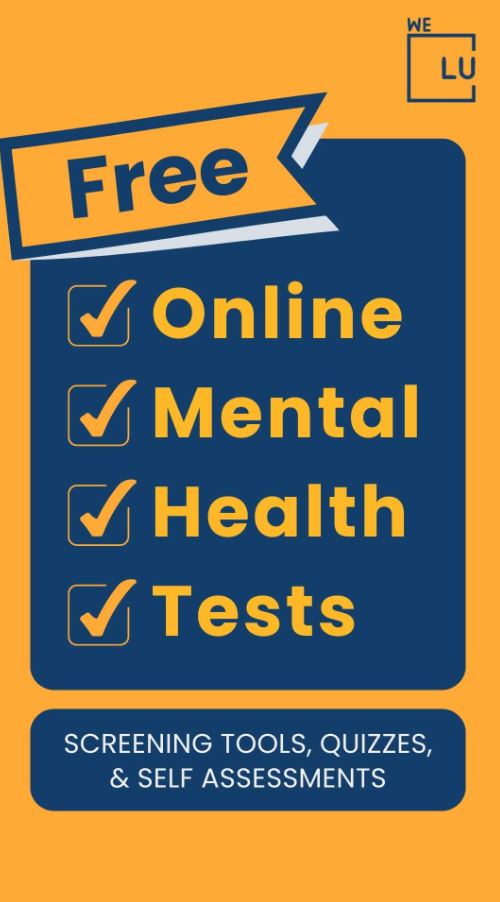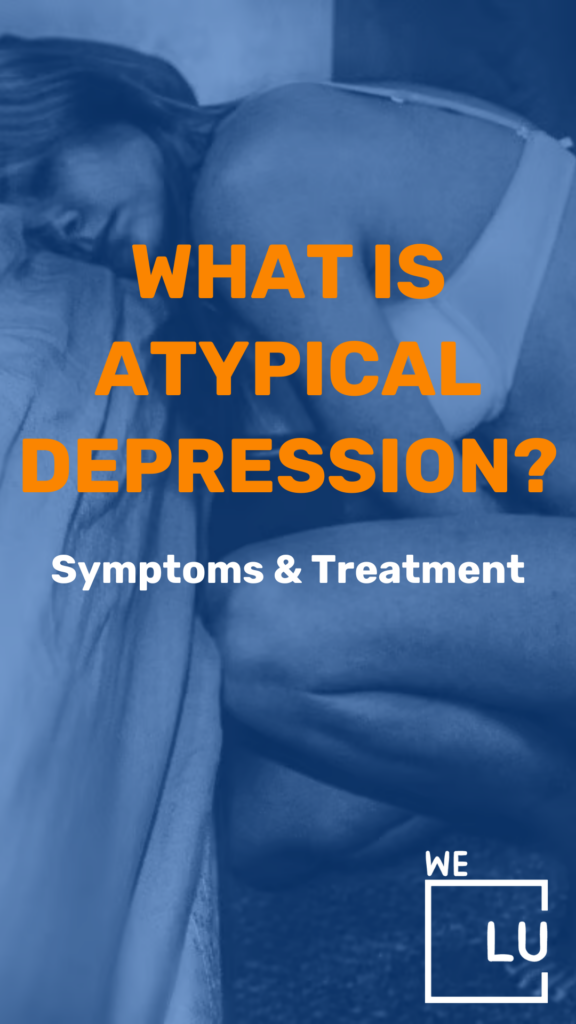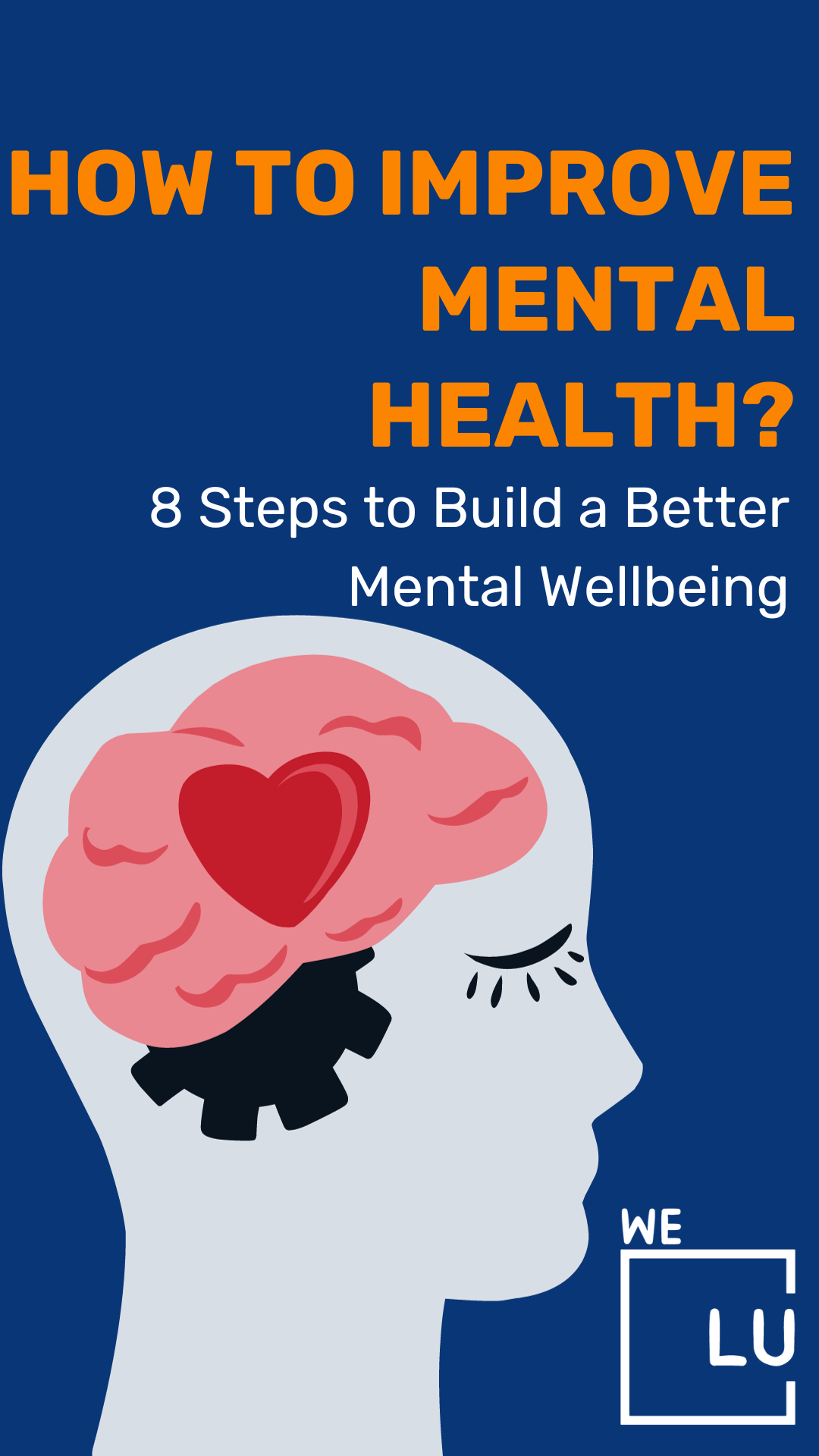PHQ 9 Assessment
Please take the following quiz to assess if you are experiencing signs and symptoms of a depressive disorder. Ensure you answer the questions honestly and thoroughly, reflecting your current emotional state rather than how you aspire to feel. It is important to remember that seeking help is always an option, regardless of the time that has passed. Let’s begin with the “PHQ 9 Assessment” from We Level Up’s treatment center network. Depressive disorder, commonly referred to as depression, is a prevalent mental condition characterized by prolonged periods of low mood or diminished enjoyment and interest in activities. Some common behavioral symptoms of a depressive disorder include:
- Episodes of anger, irritability, or frustration, even in response to minor issues.
- Disruptions in sleep patterns encompassing either insomnia or excessive sleep.
- Diminished appetite and weight loss, or heightened cravings for food leading to weight gain.
Please complete the free PHQ 9 Assessment to gain insights into your circumstances. This concise PHQ 9 Assessment aims to identify behavioral patterns that may indicate a tendency toward a depressive disorder. While it can provide valuable information, it is essential to note that it is not intended as a comprehensive diagnosis or for diagnosing a specific type of depressive disorder. Depending on your responses, you may receive a potential indication of a depressive disorder. If so, we are here and prepared to offer assistance. However, consulting with a healthcare professional for a clinical diagnosis is crucial. Please feel free to contact us 24/7 with any questions, and rest assured that no obligations are involved.
Take Our Free PHQ-9 Assessment
Take Our PHQ 9 Assessment Online Confidential Results
The Patient Health Questionnaire-9 (PHQ-9) is a widely used tool in the field of mental health for assessing the severity of depressive symptoms in individuals. It consists of nine questions that correspond to the criteria for major depressive disorder in the Diagnostic and Statistical Manual of Mental Disorders (DSM-5). Each question is designed to measure the frequency of specific depressive symptoms over the past two weeks.
*By taking this free quiz, you may obtain your results online and in your email box. You’ll have the opportunity to opt-in to learn more about your symptoms, talk to a mental health consultant and join our newsletter. Rest assured your information is private and confidential. Results, consultations and assessment are provided without any cost to you and without any obligation. If you do not wish to provide your contact information, you may omit it during your quiz. Thank you for opting in and participating. To you best of health.
What Is The PHQ 9 Assessment?

The PHQ-9 assessment, or Patient Health Questionnaire-9, is a standardized tool used to measure and evaluate the severity of depression in individuals. It consists of a nine-question questionnaire that assesses various symptoms commonly associated with depression. This self-reporting instrument helps healthcare professionals in diagnosing and monitoring depressive disorders, providing valuable information about the patient’s mental health status.
The PHQ-9 assessment is widely recognized and utilized in clinical and research settings. It was specifically designed to assist healthcare professionals, such as primary care physicians and mental health practitioners, in identifying and understanding the presence and intensity of depressive symptoms in their patients.
The questionnaire covers a range of typical depressive symptoms, including feelings of sadness, lack of interest or pleasure in activities, changes in appetite or weight, sleep disturbances, fatigue, feelings of worthlessness or guilt, difficulty concentrating, and thoughts of death or self-harm.
Patients typically self-administer the PHQ-9 by responding to the questionnaire rating the frequency and intensity of their symptoms over a specified period. Each item is assigned a numerical value, and the total score indicates the overall severity of depression. This quantitative approach allows healthcare providers to assess the impact of depression on the individual’s daily life and functioning.
The PHQ-9 is a valuable tool for initiating conversations about mental health between patients and healthcare providers. It aids in the early detection of depression, facilitates appropriate referrals for further evaluation or treatment, and helps monitor symptom changes over time. The structured nature of the assessment contributes to a more systematic and comprehensive understanding of the patient’s mental health status, fostering a more informed and tailored approach to care.
The Benefits Of The PHQ 9 Assessment
The PHQ-9 assessment offers several benefits in the context of mental health screening and care:
- Efficient Screening Tool: The PHQ-9 is a quick, straightforward self-report questionnaire that efficiently screens for depressive symptoms. Its brevity makes it a practical tool for use in various healthcare settings.
- Objective Measurement: By providing a numerical score based on the patient’s responses, the PHQ-9 offers an objective measure of depression severity. This can help healthcare professionals quantify and track changes in symptoms over time.
- Standardized Assessment: The PHQ-9 is a standardized instrument that has been rigorously developed and validated. This standardization enhances the reliability and validity of the assessment, making it a robust tool for consistent use across different populations and settings.
- Initiates Dialogue: The assessment can be a conversation starter between healthcare providers and patients regarding mental health. It allows for a structured discussion about depressive symptoms, facilitating communication and understanding.
- Treatment Planning: The severity levels identified by the PHQ-9 can guide healthcare professionals in determining appropriate treatment plans. Whether it involves lifestyle changes, psychotherapy, medication, or a combination of interventions, the assessment results contribute to personalized and effective care.
- Monitoring Progress: Over time, repeated administrations of the PHQ-9 can help monitor changes in depressive symptoms. This ongoing assessment is valuable in evaluating the effectiveness of treatment interventions and making necessary adjustments.
- Research and Epidemiology: The widespread use and standardization of the PHQ-9 make it a valuable tool in research and epidemiological studies. Its consistent application across diverse populations contributes to a better understanding of the prevalence and impact of depression.
- Cost-Effective: As a self-report questionnaire, the PHQ-9 is a cost-effective tool for mental health screening. It doesn’t require extensive resources or specialized training to administer, making it accessible in various healthcare settings.
While the PHQ-9 has notable advantages, using its results as part of a comprehensive clinical assessment, considering individual patient circumstances and context is essential. Additionally, the assessment should be interpreted by qualified healthcare professionals to ensure accurate diagnosis and appropriate intervention.
Once you have finished answering the PHQ 9 Assessment, please submit your responses and wait for the results. Sharing your test results with a professional healthcare counselor or mental health expert is advisable. If you require assistance, feel free to contact the We Level Up treatment center advocates for a complimentary evaluation and consultation regarding depressive disorder. Rest assured, no obligations are involved, and your call will remain confidential and free of charge.
Get Help. Get Better. Get Your Life Back.
Searching for Accredited Drug and Alcohol Rehab Centers Near You?
Even if you have failed previously and relapsed, or are in the middle of a difficult crisis, we stand ready to support you. Our trusted behavioral health specialists will not give up on you. When you feel ready or just want someone to speak to about therapy alternatives to change your life call us. Even if we cannot assist you, we will lead you to wherever you can get support. There is no obligation. Call our hotline today.
(844) 597-1011PHQ 9 Assessment Uses
The PHQ-9 assessment is widely used in various healthcare settings for several purposes:
- Screening for Depression: The primary use of the PHQ-9 is to screen for the presence of depressive symptoms. It helps identify individuals who may be experiencing depression or are at risk of developing depressive disorders.
- Diagnosis: While the PHQ-9 is not a diagnostic tool, it provides valuable information that assists healthcare professionals in diagnosing depressive disorders. Elevated scores prompt further evaluation to confirm the diagnosis.
- Severity Assessment: The PHQ-9 quantifies the severity of depressive symptoms, ranging from minimal to severe. This information helps healthcare providers understand the impact of depression on the individual’s daily functioning and quality of life.
- Treatment Planning: The severity levels identified by the PHQ-9 guide healthcare professionals in developing appropriate treatment plans. Based on the assessment results, clinicians may recommend various interventions, including psychotherapy, medication, lifestyle changes, or a combination of approaches.
- Monitoring Treatment Progress: The PHQ-9 monitors changes in depressive symptoms over time, allowing healthcare professionals to assess the effectiveness of treatment interventions. Regular administration can help track progress and guide adjustments to the treatment plan.
- Research and Epidemiology: The PHQ-9 is employed in research studies and epidemiological surveys to gather data on the prevalence and impact of depression across diverse populations. Its standardized nature makes it a valuable tool for comparative analysis.
- Primary Care Settings: The PHQ-9 is particularly useful in primary care settings where healthcare providers may not specialize in mental health but can use the assessment as a first step in identifying and addressing depressive symptoms.
- Telehealth and Remote Monitoring: The simplicity and ease of administration make the PHQ-9 suitable for telehealth appointments and remote monitoring of depressive symptoms. Patients can self-administer the questionnaire, and the results can be discussed during virtual consultations.
- Education and Awareness: The PHQ-9 can be a tool for educating individuals about depressive symptoms. By completing the questionnaire, individuals gain awareness of their mental health and are prompted to seek further evaluation and support if needed.
- Integration into Electronic Health Records (EHR): Many healthcare systems integrate the PHQ-9 into electronic health records, allowing for seamless documentation and tracking of depressive symptoms over time.
The PHQ-9’s versatility, ease of use, and effectiveness make it a valuable instrument in the comprehensive approach to understanding, diagnosing, and managing depression in clinical and research settings.
Skip To:
Learn More:
- Free CIWA Score Assessment Quiz, CIWA-Ar for Withdrawal
- Free Online Drug And Alcohol Tests, Quizzes, & Assessments
- How Do I Know If I Have CHS Quiz? Free CHS Diagnosis Quiz. How To Make CHS Go Away?
- Online Confidential Am I An Alcoholic Quiz For Free
- Free Online Mental Health Tests, Quizzes, Self Assessments, & Screening Tools
- PMDD Test, Do I Have Premenstrual Dysphoric Disorder?
- Free Online Psychosis Test, Confidential Results
- Agoraphobia Test, Symptoms & Signs Of Agoraphobia
- Emotional Abuse Test, Am I In An Abusive Relationship? Emotionally Abusive Relationship Test
- Free Attachment Style Test, Fast & Easy Relationship Attachment Style Test

Why Is Evaluating Depression So Important?
Evaluating depression is crucial for several reasons:
- Early Detection and Intervention: Evaluating depression allows for early detection of symptoms. Early intervention is essential in preventing the worsening of depressive disorders and can lead to more effective treatment outcomes.
- Prevention of Complications: Untreated depression can lead to a range of complications, including physical health problems, impaired cognitive function, and an increased risk of developing other mental health conditions. Evaluating depression helps identify risks and prevent these complications.
- Improved Quality of Life: Depression can significantly impact a person’s daily life, relationships, and overall well-being. Evaluation and subsequent treatment can help individuals regain a higher quality of life by addressing and managing their depressive symptoms.
- Reduced Economic Burden: Depression can result in significant economic costs due to decreased productivity, increased healthcare utilization, and disability. Evaluating and addressing depression can contribute to reducing these economic burdens on individuals and society.
- Risk of Suicide Prevention: Depression is a significant risk factor for suicide. Identifying and evaluating depressive symptoms allows for timely intervention and appropriate support to prevent suicidal thoughts and behaviors.
- Enhanced Physical Health Management: Depression is associated with various physical health issues, such as cardiovascular problems, compromised immune function, and increased vulnerability to chronic conditions. Evaluating depression enables healthcare providers to address both mental and physical health needs comprehensively.
- Personalized Treatment Planning: Depression is a heterogeneous condition, and individuals may experience it differently. Evaluation helps tailor treatment plans to the specific needs of each individual, increasing the likelihood of successful outcomes.
- Improved Functioning and Productivity: Depression can impact a person’s ability to perform daily tasks, maintain employment, and engage in social activities. Evaluation and treatment can lead to improved functioning and increased productivity.
- Reduction in Social Stigma: By openly evaluating and addressing depression, the associated stigma can be reduced. Encouraging open conversations about mental health contributes to a more supportive and understanding societal environment.
- Enhanced Public Health: Evaluating depression on a population level contributes to a better understanding of its prevalence, risk factors, and impact. This information is valuable for public health planning, resource allocation, and the development of targeted interventions.
In summary, evaluating depression is essential for promoting mental health, preventing complications, reducing the burden on individuals and society, and ultimately improving overall well-being. It underscores the importance of a comprehensive and integrated approach to mental health care.
How to Improve Mental Health? 8 Steps & Tips for Maintaining Your Mental Wellbeing
Experience Transformative Recovery at We Level Up Treatment Centers.
See our authentic success stories. Get inspired. Get the help you deserve.
Start a New Life
Begin with a free call to an addiction & behavioral health treatment advisor. Learn more about our dual-diagnosis programs. The We Level Up Treatment Center Network delivers recovery programs that vary by each treatment facility. Call to learn more.
- Personalized Care
- Caring Accountable Staff
- World-class Amenities
- Licensed & Accredited
- Renowned w/ 100s 5-Star Reviews
We’ll Call You
Search We Level Up PHQ 9 Assessment Mental Health Topics & Resources
Sources
- American Psychiatric Association. (2013). Diagnostic and statistical manual of mental disorders (5th ed.). Arlington, VA: American Psychiatric Publishing. Learn More: How to Cope with Depression
- Depression. (2018).
nimh.nih.gov/health/topics/depression/ Learn More: What does depression feel like? / Depression Symptoms Learn More: How to Cope with Depression - Depression medicines. (2019).
fda.gov/consumers/free-publications-women/depression-medicines Learn More: How to Cope with Depression - O’Donnell ML, et al. (2019). Adjustment disorder: Current developments and future directions.
mdpi.com/1660-4601/16/14/2537 What does depression feel like? / Depression Symptoms Learn More: How to Cope with Depression - What is PTSD? (2020).
psychiatry.org/patients-families/ptsd/what-is-ptsd Learn More: How to Cope with Depression - Depression. (2017).
nami.org/About-Mental-Illness/Mental-Health-Conditions/Depression Learn More: How to Cope with Depression - IsHak WW, et al. (2018). Pain and depression: A systematic review.
pubmed.ncbi.nlm.nih.gov/30407234/ Learn More: How to Cope with Depression - Israel L. (2022). Personal interview.
- Ostergaard L, et al. (2018). Low on energy? An energy supply-demand perspective on stress and depression.
sciencedirect.com/science/article/abs/pii/S0149763418300812 Learn More: How to Cope with Depression - Steiger A, et al. (2019). Depression and sleep.
mdpi.com/1422-0067/20/3/607/htm?from=article_link Learn More: How to Cope with Depression - Vidal-Ribas P, et al. (2021). How and why are irritability and depression linked?
pubmed.ncbi.nlm.nih.gov/33743947/ Learn More: How to Cope with Depression




